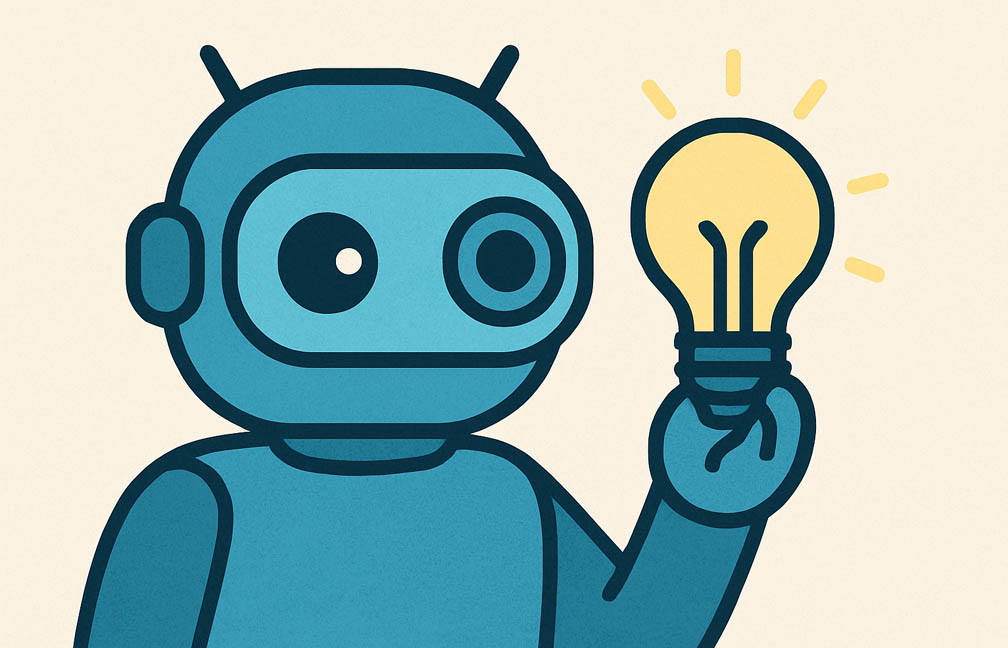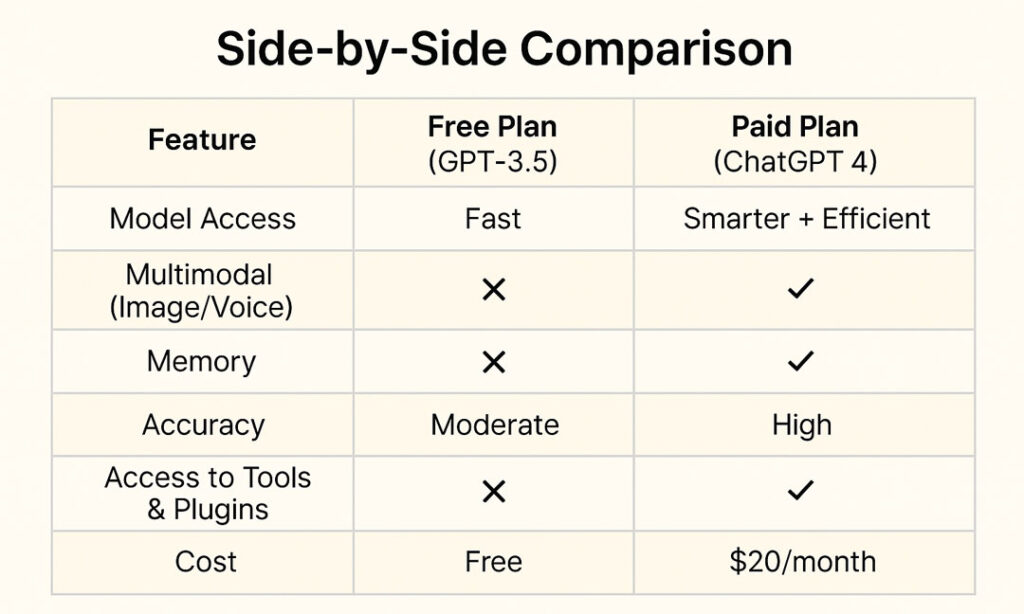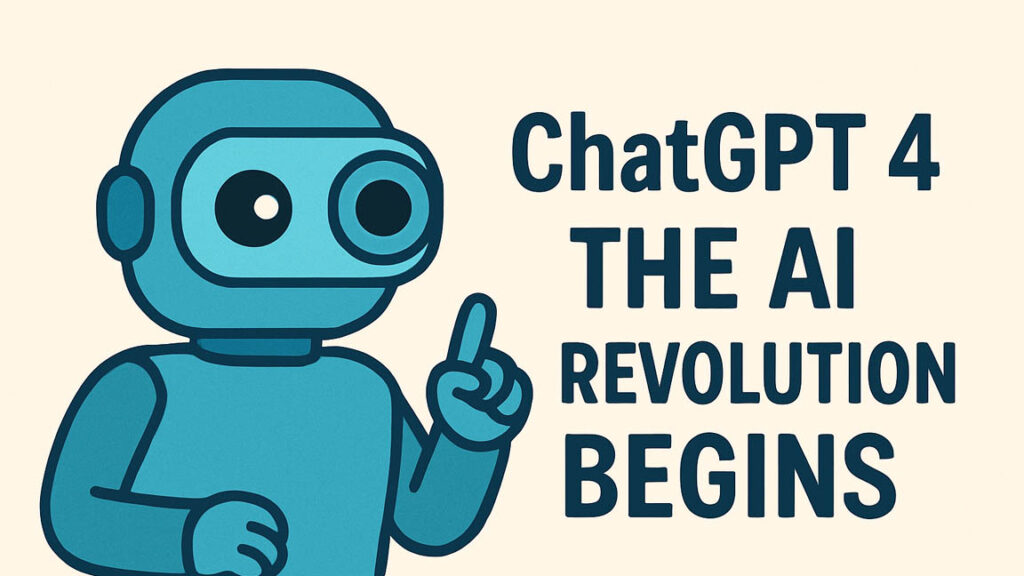“ChatGPT 4 isn’t just another upgrade — it’s a revolution in how we interact with intelligence.”
Ever since OpenAI launched its groundbreaking language models, the world has been on the edge of its seat, waiting for what’s next. And now, with ChatGPT 4, that wait is over — but what’s arrived is far beyond what anyone imagined.
In 2025, ChatGPT 4 is not just helping people write better or code faster — it’s changing how students learn, how companies work, and even how humans think. This version brings the power of real-time reasoning, multimodal inputs, and memory-based interactions — all inside a single, seamless AI.
But how exactly is ChatGPT 4 different from what came before?
Can it truly understand you better than a human?
And more importantly — should you be using it right now?
Let’s break it all down — feature by feature, fact by fact — in this ultimate guide to ChatGPT 4.
What is ChatGPT 4 — and How is it Different?
ChatGPT 4 is the fourth-generation large language model developed by OpenAI, launched in 2023 and refined through 2024–2025. Unlike its predecessor GPT-3.5, which was already impressive in language generation, ChatGPT 4 goes far beyond by combining speed, memory, logic, and multimodal capabilities into one unified system.
It isn’t just “smarter” — it’s more aware, more fluid, and significantly more helpful in complex scenarios.
Key Improvements Over Previous Versions:
1. Memory & Personalization
Unlike GPT-3.5, ChatGPT 4 (especially GPT-4o) can remember your past instructions and preferences (if enabled), giving it the ability to build a personalized relationship over time.
Example: If you ask it to always reply in a casual tone, it can remember that in future conversations.
2. Multimodal Capabilities
One of the biggest leaps is in GPT-4o, a variant of ChatGPT 4 that can understand and respond to:
- Text
- Images
- Voice inputs
This opens up new ways to interact with AI beyond just typing — a shift that could redefine accessibility.
3. Better Reasoning & Logic
ChatGPT 4 is significantly better at tasks that require:
- Step-by-step thinking
- Understanding nuance
- Explaining complex topics
For example, solving puzzles, math problems, or interpreting sarcasm is easier for GPT-4 than any previous version.
4. Fewer Mistakes (Hallucinations)
AI hallucinations — where the model makes up facts — are far less frequent in ChatGPT 4.
It’s trained on more refined data and uses better guardrails to provide factual, verified responses.
5. Tone Control & Context Depth
GPT-4 can match your writing tone (casual, formal, poetic, etc.) far better than GPT-3.5.
It also handles longer context windows, meaning it can remember more of your earlier conversation within the same session — crucial for in-depth writing or research.
In Simple Words:
“ChatGPT 3.5 was like a smart student. ChatGPT 4 is like a thoughtful assistant who remembers your style, solves problems better, and speaks your language — literally.”
Why This Matters:
In the era of personalized AI, the need isn’t just for a tool that responds — it’s for one that understands. And that’s where ChatGPT stands out: not just as a language model, but as a next-gen thinking partner.
Core Features of ChatGPT 4 That Matter
While many AI models claim to be powerful, ChatGPT 4 stands out because of its precision, versatility, and deep context understanding. It isn’t just about answering questions — it’s about doing it intelligently, like a thinking partner that adapts to your needs.
Let’s explore the core features that make ChatGPT a true game-changer in 2025:
1. Enhanced Context Handling
One of the standout features of ChatGPT 4 is its ability to manage longer and more complex conversations without losing the thread.
It can understand multiple layers of meaning, refer back to earlier parts of a conversation, and follow instructions with near-human precision.
Example: You can ask it to write a story, edit it in a different style, and continue a scene from paragraph 3 — all in one flow.
2. Real-Time Reasoning and Decision Making
ChatGPT 4 is much better at reasoning through complex situations. Whether it’s logical deduction, math-based problem solving, or multi-step instructions, it delivers clearer, more accurate results compared to older models.
It’s not just responding — it’s thinking through the task.
3. Dynamic Tone & Style Matching
Need your email in a formal tone? Or a script in Gen-Z slang?
ChatGPT 4 can mimic tone, voice, and writing style with impressive accuracy — helping writers, marketers, and professionals keep their content on-brand.
4. Better Instruction Following
Earlier models often missed key details in prompts. ChatGPT 4, however, shows improved understanding of multi-step and layered instructions.
You can ask: “Summarize this article, but keep the emotional tone, use short paragraphs, and add bullet points at the end” — and it’ll deliver exactly that.
5. Multimodal Support (GPT-4o)
With the launch of GPT-4o, a major variant of ChatGPT 4, users can now:
- Upload and analyze images
- Use voice input/output
- Combine different formats in one task
This unlocks new possibilities for visually-impaired users, educators, and creative professionals.
6. High-Quality Coding and Debugging
Developers love GPT-4 for its accuracy in:
- Writing clean code
- Debugging existing scripts
- Explaining what code does in simple terms
From Python to HTML, it acts like a helpful co-pilot for both beginners and pros.
7. Multilingual Excellence
ChatGPT 4 understands and communicates in dozens of languages with much higher fluency than before. It’s especially strong in:
- Translating with emotion and nuance
- Conversational tone in non-English texts
- Cultural context sensitivity
8. Expanded Memory (Pro Plan)
When memory is enabled, ChatGPT 4 can:
- Recall your name, goals, tone preferences
- Improve its responses over time
- Provide continuity across sessions
This personal touch makes it more than a tool — it becomes a virtual assistant tailored to you.
9. Factual Accuracy Boost
GPT-4’s responses are backed by improved factual training. While it’s still important to verify critical info, hallucinations (false answers) are significantly reduced compared to GPT-3.5 — especially on topics like science, law, and health.
10. Custom Instructions Support
You can tell ChatGPT 4 exactly:
- How you want it to respond
- What to avoid
- What tone or personality to use
And it will follow that style until you change it. This gives total control over how your AI behaves.

ChatGPT 4 vs GPT-3.5: Honest Comparison
When most people first experience ChatGPT 4, they say the same thing:
“Wait… this feels different.”
And they’re absolutely right.
While both models belong to the same family of language models developed by OpenAI, the difference in depth, accuracy, and versatility between GPT-3.5 and ChatGPT 4 is more than just an upgrade — it’s a leap.
Let’s break down how ChatGPT 4 compares against GPT-3.5 across real-world tasks:
1. Understanding Instructions
- GPT-3.5: Often misunderstands multi-step prompts or oversimplifies answers.
- ChatGPT 4: Handles layered instructions better, following context and delivering tailored responses without missing key details.
Example: You can ask ChatGPT 4 to write a formal email, summarize it, and then translate it — all in one go — with better accuracy.
2. Factual Accuracy & Hallucinations
- GPT-3.5: Frequently “hallucinates” — inventing names, facts, or data.
- ChatGPT 4: Significantly reduces hallucinations due to improved training data and internal guardrails, especially in technical or scientific topics.
3. Reasoning & Logic
- GPT-3.5: Basic reasoning works, but struggles with multi-step logic or math-heavy questions.
- ChatGPT 4: Excels in solving problems that require logic, planning, or abstract thinking — even outperforming some humans in logic-based exams.
4. Language Fluency & Tone Control
- GPT-3.5: Language is fluent, but sometimes stiff or generic.
- ChatGPT 4: Adapts tone to match prompts — casual, poetic, sarcastic, professional — making responses feel more alive and human-like.
5. Conversation Memory (Pro Feature)
- GPT-3.5: Does not retain memory across sessions.
- ChatGPT 4: With memory enabled, it remembers your name, goals, writing style, and previous preferences — improving personalization over time.
6. Multimodal Support
- GPT-3.5: Limited to text only.
- ChatGPT 4 (GPT-4o): Accepts images, voice, and text, and can respond in voice as well — unlocking new experiences across devices.
7. Speed vs. Intelligence Trade-Off
- GPT-3.5: Generally faster to respond, but shallower in thinking.
- ChatGPT 4: Slightly slower, but responses are deeper, more insightful, and tailored to complex queries.
8. Coding Help
- GPT-3.5: Can write code, but debugging and understanding context is limited.
- ChatGPT 4: Offers cleaner, more optimized code; better at explaining errors and rewriting snippets for specific platforms or frameworks.
9. Multilingual Performance
- GPT-3.5: Struggles with idioms, tone, and emotion in non-English languages.
- ChatGPT 4: Far more fluent and emotionally intelligent in languages like Hindi, Spanish, French, etc. Ideal for global users.
10. Customization & Safety
- GPT-3.5: Limited control over tone, structure, and content filters.
- ChatGPT 4: Offers custom instructions, safety alignment, and better control over how it behaves — important for professional or sensitive use cases.
Can ChatGPT 4 Replace Jobs or Create New Ones?
The rise of ChatGPT 4 has reignited one of the most pressing debates in the AI world:
Will it take jobs away, or create entirely new ones we haven’t imagined yet?
The truth is — it’s doing both.
While some roles are becoming obsolete or evolving rapidly, a new ecosystem of AI-powered opportunities is emerging, especially in 2025.
1. Jobs at Risk of Automation
Certain tasks — especially those that are repetitive, rule-based, or involve basic content creation — are being increasingly handled by ChatGPT 4 with greater speed and precision. Examples include:
- Entry-level copywriting
- Basic customer support chats
- Email drafting and report summaries
- Social media caption writing
These roles aren’t disappearing overnight — but the demand for manual labor in them is declining fast.
2. AI is Replacing Tasks, Not Entire Professions
It’s important to understand that ChatGPT 4 replaces tasks, not humans.
A marketing manager might now use ChatGPT 4 to write 80% of a campaign — but the creative strategy, emotional intelligence, and final decision still need a human brain.
It’s not about humans vs AI — it’s about humans with AI vs humans without AI.
3. Emerging Roles Powered by ChatGPT 4
With AI becoming a daily tool, new job titles are emerging in industries everywhere:
- Prompt Engineers: Experts in giving ChatGPT the right instructions for optimal results
- AI Workflow Designers: Creating processes that blend human skills with AI tasks
- LLM Content Editors: Professionals who review and humanize AI-written content
- ChatGPT Trainers: Helping companies customize how ChatGPT responds internally
These jobs didn’t exist 3 years ago — and they’re already paying well in 2025.
4. Industries Getting Transformed, Not Destroyed
Instead of wiping out entire industries, ChatGPT 4 is reshaping how they operate:
- In law, it’s used for quick contract summaries
- In healthcare, it drafts reports and patient notes faster
- In education, it personalizes content for different learners
- In finance, it analyzes data and explains it in simple language
The core professionals remain essential, but they’re now more efficient, creative, and scalable.
5. Freelancers & Creators: Supercharged by ChatGPT 4
Rather than being threatened, many freelancers are thriving by learning to use ChatGPT 4 as a creative co-pilot:
- Writers produce 5x more content without burning out
- Designers use AI to generate ideas and product names
- Entrepreneurs build faster MVPs with ChatGPT’s coding help
6. AI Democratizes Opportunities Globally
A student in a rural town can now:
- Learn coding
- Write a blog
- Start a business
All with the help of ChatGPT 4 — breaking the old barriers of geography, money, and formal education.
This is creating micro-entrepreneurs and side hustles at an explosive scale in 2025.
7. But It’s Not All Positive: Disruption is Real
Not everyone benefits equally.
Older professionals or those in traditional systems without digital skills are facing uncertainty.
Companies are downsizing departments where AI reduces dependency on human labor.
Upskilling is no longer optional — it’s survival.
8. Final Reality: Adapt or Be Replaced
The arrival of ChatGPT 4 marks a shift, not an end.
Just like calculators didn’t replace accountants, AI won’t replace everyone — but those who know how to use it will replace those who don’t.
Free vs Paid ChatGPT: Which One to Choose?
As AI becomes more integrated into our lives, many users are asking the big question:
“Should I upgrade to the paid version of ChatGPT 4, or is the free plan enough?”
The answer depends on your needs — because the free vs paid ChatGPT 4 experience is not just about cost. It’s about speed, intelligence, access, and long-term value.
Let’s break it down clearly.
What You Get with Free ChatGPT (GPT-3.5)
OpenAI’s free plan still offers access to a powerful AI: GPT-3.5.
It’s fast, creative, and helpful for basic tasks like:
- Writing blogs and emails
- Generating ideas
- Answering simple questions
- Creating short scripts or outlines
But — GPT-3.5 has limitations in 2025:
- Lower accuracy
- Weaker reasoning in complex topics
- No memory or personalization
- No access to voice or image input
- Can’t use GPT-4 level intelligence
Best for: Casual users, students, hobbyists, and light writing tasks.

What You Unlock with Paid ChatGPT (GPT-4/GPT-4o)
For $20/month (as of 2025), the Pro plan gives you full access to ChatGPT 4, including the powerful GPT-4o model — a completely different experience.
Here’s what you get:
- Smarter responses with better logic and fewer errors
- Access to image input, voice conversations, and real-time responses
- Memory feature — it remembers your name, tone, past prompts, etc.
- Faster performance during peak hours
- Use of custom GPTs and tools (like browser, code interpreter, plugins)
Best for: Professionals, creators, researchers, coders, business owners — anyone who relies on AI daily for serious work.
So, Which One Should You Choose?
Stay on Free If:
- You’re exploring AI casually
- You don’t need advanced reasoning or tools
- You’re okay with occasional errors
- You want to try basic writing, chatting, or Q&A
Go Pro If:
- You rely on AI for work, productivity, or business
- You need visual/voice interaction
- You want memory + personalization
- You want premium accuracy and performance
paid version isn’t just an upgrade — it’s a different class of intelligence.
If you use AI daily or professionally, the Pro version pays for itself in saved time and higher-quality results.
But if you’re just experimenting or using it occasionally, the free version of ChatGPT 3.5 is still a powerful starting point.
FAQ: People Also Ask About ChatGPT 4 ❓
1. What is ChatGPT 4 and how is it better than GPT-3.5?
ChatGPT 4 is the latest AI model from OpenAI, offering smarter, faster, and more accurate responses compared to GPT-3.5. It also supports image input, voice conversations, memory, and better reasoning — making it ideal for professional use.
2. Is ChatGPT 4 free or paid?
ChatGPT 4 is only available with a paid ChatGPT Plus plan, which costs $20/month. The free version of ChatGPT gives you access to GPT-3.5 only.
3. Can ChatGPT 4 replace human jobs?
ChatGPT 4 can automate many tasks — like writing, coding, customer service, and more — but it also creates new job opportunities in AI training, prompt engineering, and content optimization. It’s more about job evolution than job loss.
4. What are the unique features of ChatGPT 4?
Key features of ChatGPT 4 include:
- Multimodal input (text, image, voice)
- Higher accuracy in answers
- Memory and personalization
- Access to advanced tools and plugins
- Faster and more natural conversations
5. How do I access ChatGPT 4 on mobile or desktop?
To access ChatGPT 4, download the ChatGPT app (iOS or Android) or visit chat.openai.com on your browser. Make sure you’re subscribed to the ChatGPT Plus plan to unlock GPT-4.
6. Can I use ChatGPT 4 for business purposes?
Yes, ChatGPT 4 is excellent for business tasks like content creation, email writing, market research, coding, and customer support. Many professionals and startups now rely on GPT-4 for productivity.
7. What is the difference between GPT-4 and GPT-4o?
GPT-4o is a newer version of GPT-4, optimized for faster, more natural interactions. It combines text, image, and voice capabilities in real-time — making it more powerful than the standard GPT-4 model.
8. Is ChatGPT 4 safe and private to use?
Yes, ChatGPT 4 follows OpenAI’s safety protocols and does not store your personal data for advertising. You can also manage your chat history and data permissions under your account settings.
9. How can I check if I’m using GPT-4 or GPT-3.5?
When using ChatGPT on desktop or mobile, click the model switcher at the top. If it says “GPT-4” or “GPT-4o,” you’re using the paid model. If it says “GPT-3.5,” you’re on the free version.
10. Does ChatGPT 4 support multiple languages?
Yes, ChatGPT 4 supports multiple languages including Hindi, Spanish, French, German, and many more. It performs better than GPT-3.5 in multilingual tasks and translations.
Final Thought: Isn’t Just a Tool — It’s a Revolution
ChatGPT 4 isn’t just another AI upgrade — it’s a bold step toward a smarter, more collaborative future.
From writing and coding to designing, researching, and even brainstorming life decisions, ChatGPT 4 has quietly become a digital companion for millions. It’s faster, more natural, and surprisingly human in the way it understands context, emotions, and creativity.
But with great power comes greater responsibility.
How we choose to use ChatGPT — as a shortcut or a skill amplifier — will define its true impact on our lives and careers. Those who adapt, learn, and evolve with it will stay ahead in this AI-powered age.
So, whether you’re a student, creator, entrepreneur, or someone simply curious — don’t fear ChatGPT .
Learn it. Leverage it. Lead with it.
Because the future isn’t coming — it’s already here, and it’s writing with you. ✨
💬 The Future of AI Isn’t Coming — It’s Already Here
From silent assistants to emotional companions, AI chatbots are changing how we feel, think, and connect.
🎯 Want to know what’s coming next?
➡️ Read the full journey of how AI is becoming more human on E‑Vichar
📢 Join the conversation on Facebook
React. Comment. Share your voice — because your thoughts matter in this AI revolution.
🌟 Your next conversation might not be with a human… but it could still feel real.
Click now and explore what that means.




